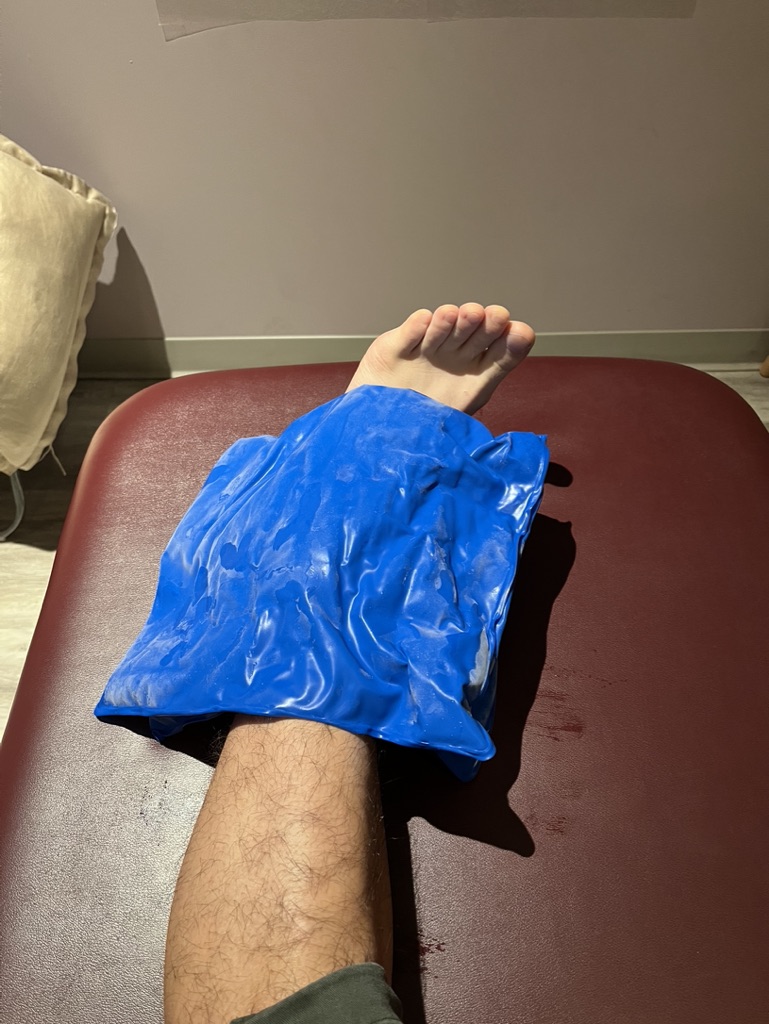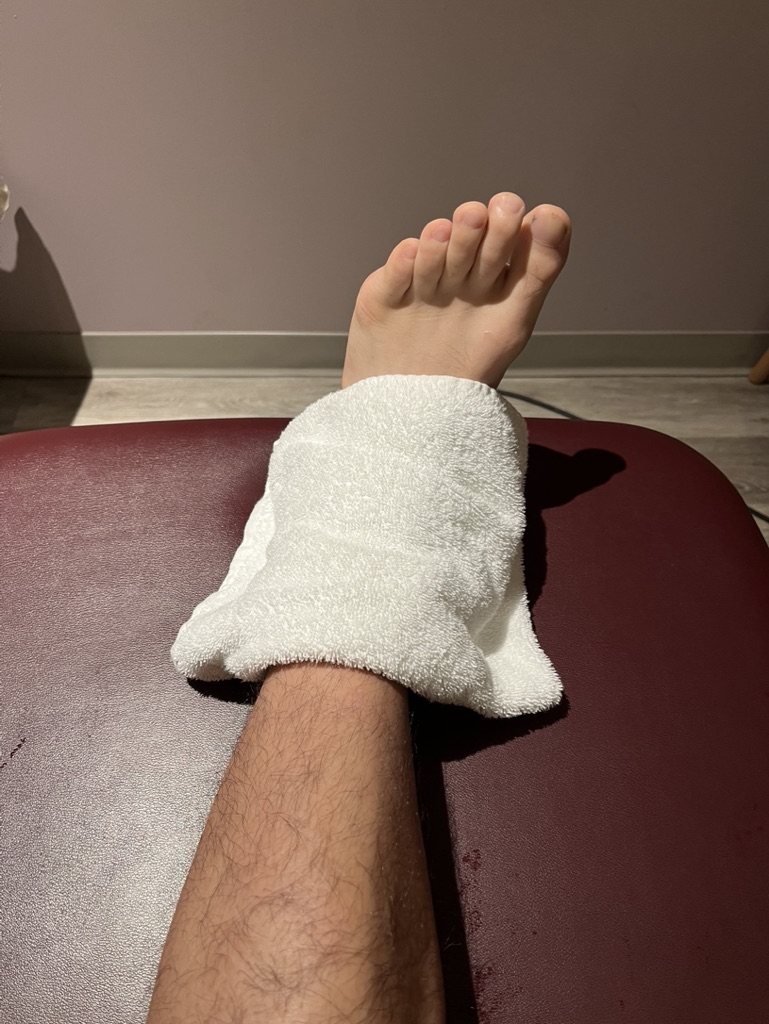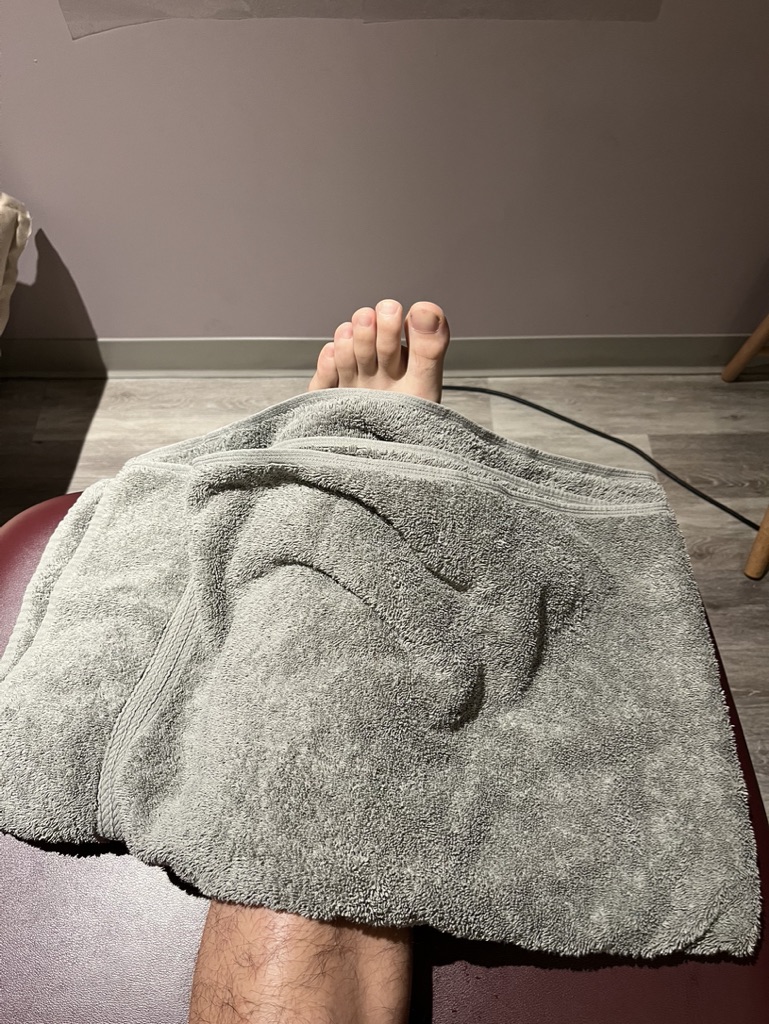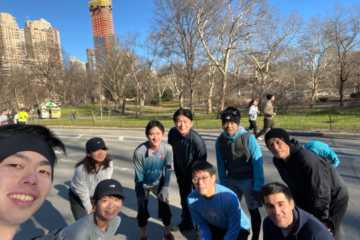Introduction
Many people ask physical therapists, “Should I put ice or heat?”. This is a controversial topic that has been discussed lately. People used to believe that we should always apply ice after ankle sprain. However, nowadays, some people argue that applying heat is better than ice because research showed that icing may slow down the healing processes including inflammation after injuries. Given a lot of research papers indicate the fact that icing delays inflammation process, it is understandable that some people argue that we should apply heat rather than ice for acute ankle sprain.
Then, should we apply heat for acute ankle sprain to speed up the healing processes? That is not true. Applying Icing and heat have different effects and purposes, so that we need to consider what effect we want from ice or heat application. Thus, the answer is, “It depends”. In this blog, I take an example of ankle sprain.

Effects of Ice
Let’s talk about the effects of icing first. I would like to focus on 2 main effects from icing.

Swelling
When we get ankle sprain, the ankle gets swollen because blood vessels around the injured ligament were damaged. If you leave it with no treatment, the bleeding spreads out under the skin (internal bleeding), and even non-injured area gets injured due to the high pressure and a lack of oxygen supply in that area. When you apply ice during internal bleeding, that decreases swelling due to reduced blood flow, and prevents from secondary injuries due to decreased internal pressure.
Pain
The other important effect of icing is to decrease pain. After ankle sprain, we drag the leg because of pain. According to the research, once we change the way of movement (walking, running) with a presence of pain, the awkward movement would remain even after pain goes away. If we apply ice and decrease pain right after injury, we do not have to change our movements. Therefore, decreasing pain and moving normally as soon as possible are the keys for the acute ankle sprain treatment.

Effects of Heat
On the other hand, heat has different effects from icing. I will discuss two major components.

Increased metabolism
As you can imagine, heat can increase blood flow in the area where it is applied. As a result, local tissue metabolism is also increased with heat. Research showed that one degree of increase in temperature can lead to 10-15% increase in the tissue metabolism. Thus, once swelling and pain go away, heat would be a good option to facilitate the healing processes.
Central effect
The second effect of heat is a central effect which means changes in the brain activity. Research shows that the insula and the thalamus activity would be changed while applying heat. These structures are both important to control pain. If I start talking about the pain mechanism in the brain, I will need at least 2 hours to explain what I know about pain, so I hold it for now. But briefly, heat may calm down the over-activated brain activity. Modulating sympathetic nervous system activity which is deeply related to the pain is also one of the central effects. If physical therapists think the patient is too sensitive to pain, heat might be applied to decrease pain with central effect.
Contrast bath
Contrast bath has been studied a lot recently. However, there is no clear evidence that shows significant effectiveness on acute ankle sprain compared to icing and heat. The evidence shows that icing immersion is more effective to reduce swelling than the use of contrast bath. Some research show that a whole-body contrast bath is good to control sympathetic and parasympathetic activity balance. If you feel contrast bath makes you feel better than other modalities, please go ahead and do it. You know yourself the most.
What should we do for ankle sprain?
Here I summarize the previous paragraphs to conclude what modalities we should apply for ankle sprain. For acute ankle sprain, icing is the first option because we would like to decrease swelling and pain to move the ankle as soon as possible. The guideline for ankle sprain treatment suggests that patients with ankle sprain should start weightbearing exercises (walking, squat, single leg balance) to achieve early return to sports activity. As I mentioned earlier, icing decreases pain so that it helps athletes perform weightbearing exercises. Prolonged immobilization with cast is something that physical therapists never recommend because immobilization would cause muscle atrophy, joint tightness, decreased sensation (proprioception), and it would even facilitate a development of fear of movement. Once swelling and pain go away (subacute phase), heat may facilitate the healing processes. Heat can also be used for chronic pain (longer than 3 months) or when therapists suspect the patients are too sensitive to pain.
Video
How about the other parts of the body?
The ideas of icing and heat can be used for other body parts of injury.
Open surgery
After any kinds of open surgery, you should apply ice all the time. Excessive inflammation reaction in the surgical area would cause severe pain and a high risk of infection in the surgical site.
Muscle injury
After muscle strain (hamstrings, calf, quad muscles), you may apply ice to reduce swelling and pain, so you can move the body part as soon as possible. Then, once swelling and pain go away, heat may be beneficial to facilitate the healing processes.
Stiff neck or low back
If you feel muscle soreness in the neck or low back, heat may increase circulation in the muscles, and you may feel better.
How do we apply ice/heat?
There are several tools to apply Ice, but iced water immersion is a good way to cool down a bony body part such as outside of the ankle. You can also use cold pack, which is easy to be used, but we have to be careful since cold pack temperature could be less than 32F (0 ℃), which may lead to frostbite.

Continuous cryotherapy
You would apply ice for 15-20 minutes every 2 hours. Feeling numbness (around 12 minutes) is the desired sensation because the purpose of it is to decrease the sensation of pain.
Intermittent cryotherapy
10 minutes of icing, 10 minutes of rest, and finish with 10 minutes of icing. This method may be better if you are unable to tolerate with icing for more than 15 minutes.
Heat
For a heat application, you can use steamed towel or hot pack covered by dry towels or a plastic bag for around 20 to 30 minutes. If the skin is wet after the heat application, you should wipe the part because that would decrease the skin temperature, which counteracts the effect of heat. (Picture: steamed towel covered by big and thick towel)


Conclusion
If you are not sure what you should do for your pain or injury, please do not hesitate to see a physical therapist. We can assess and treat your condition and give you a proper advice. It is very important to manage your own health by yourself. However, using a high-quality healthcare service (Funcphysio!!) would help you understand what the right action is for your health.
#NewYork#FuncPhysio#Anklesprain#Icing/heating#sportsinjury


